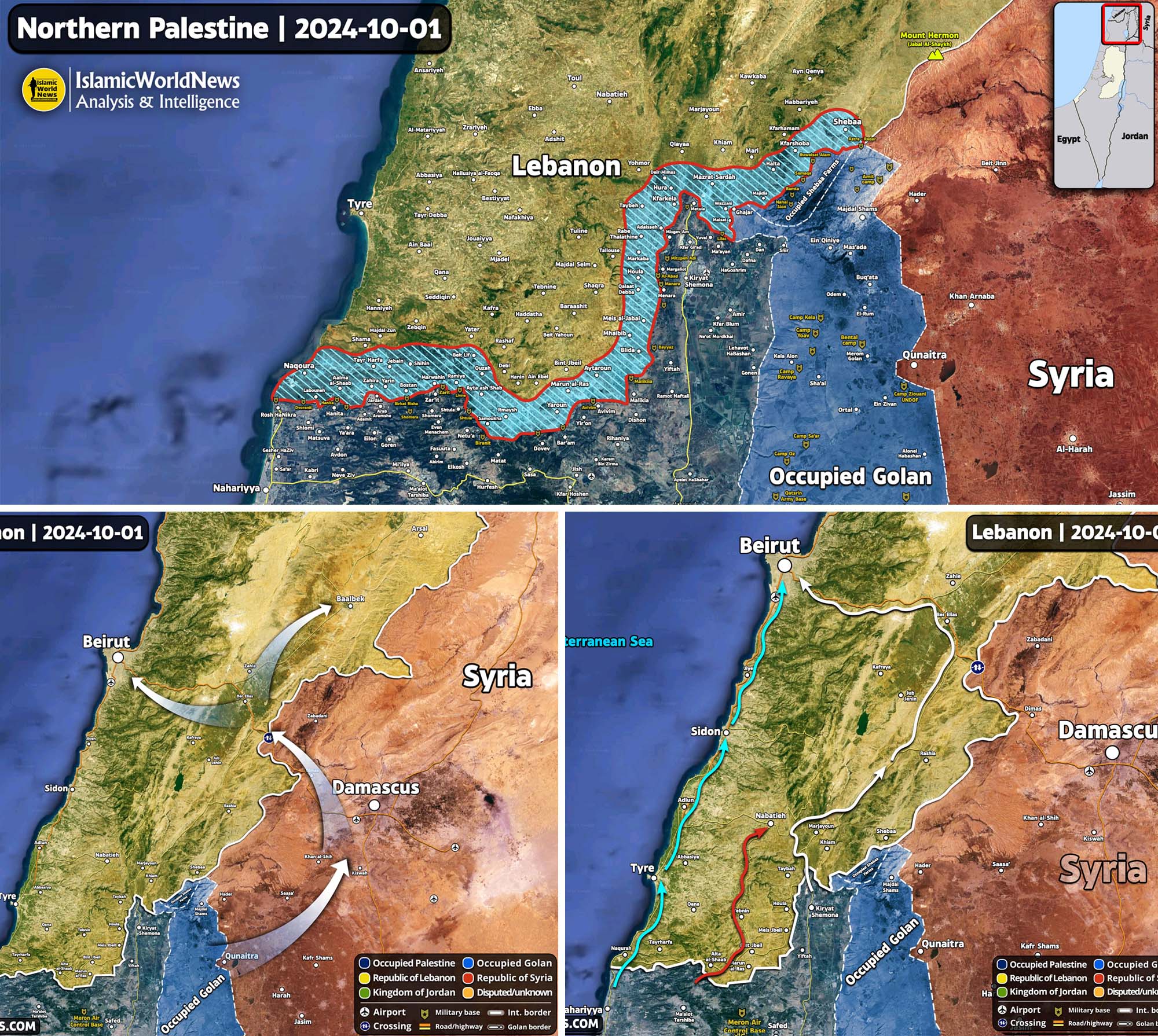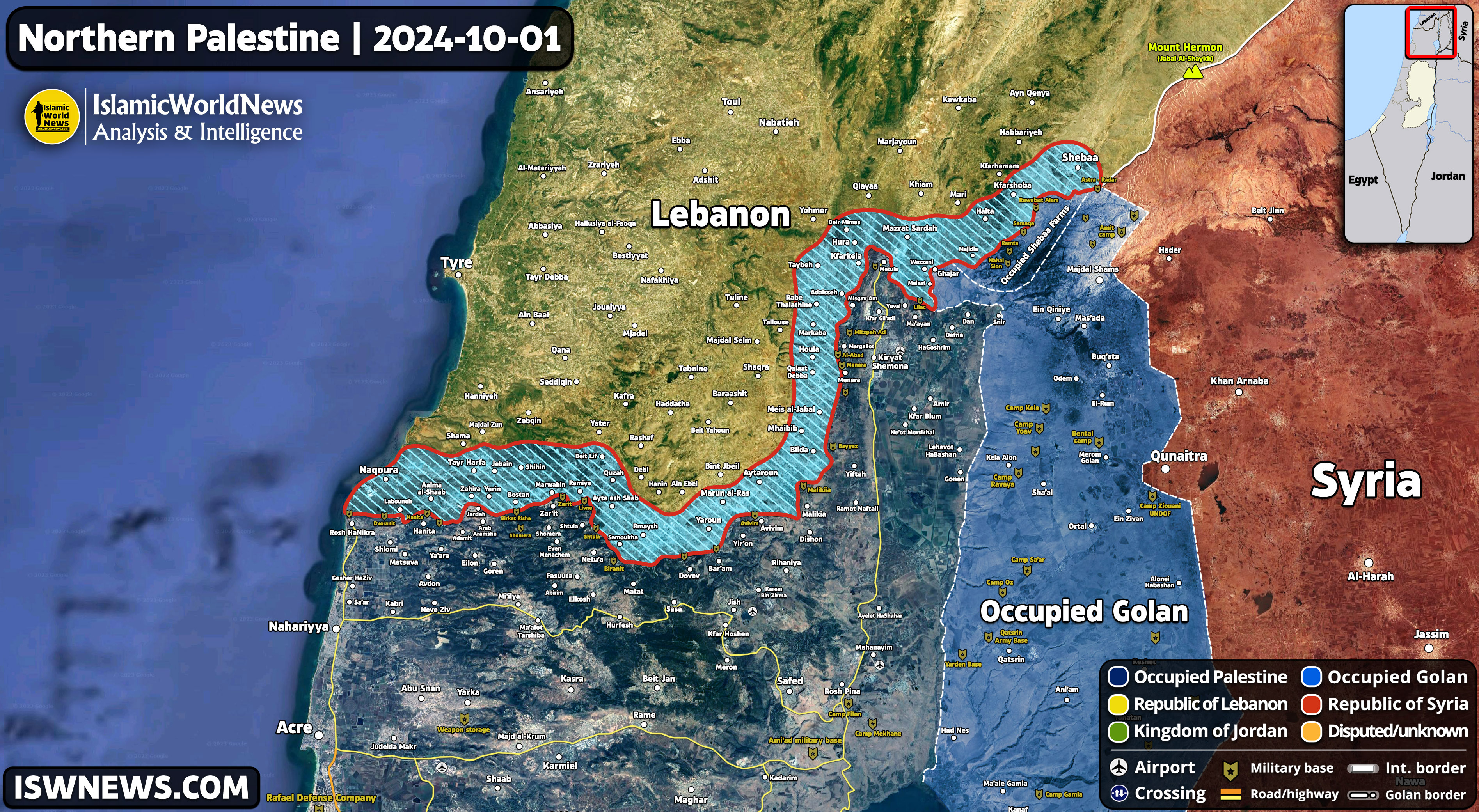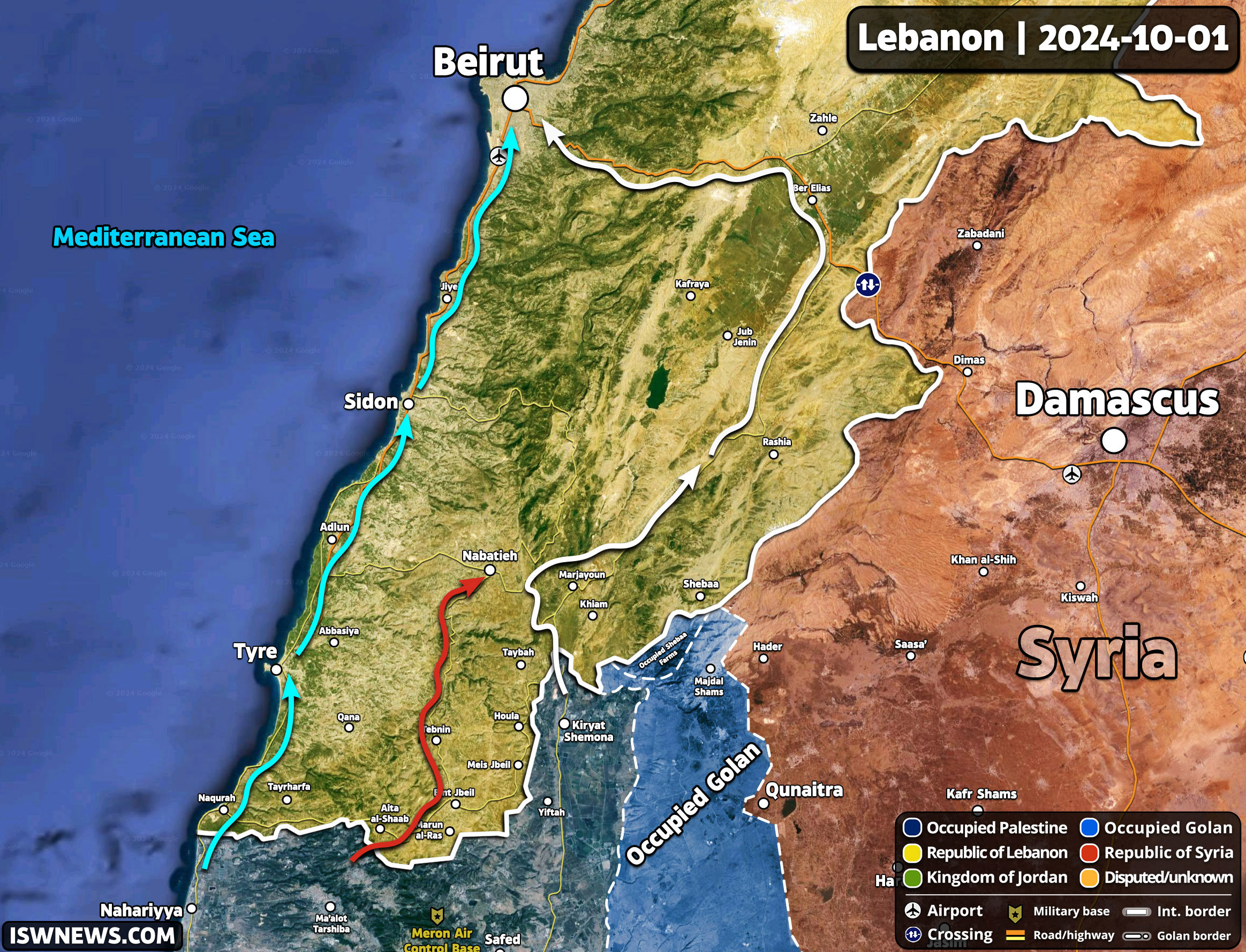Israel’s Ground Invasion Of Lebanon And Syria: What Would It Look Like?

The Israeli regime’s ground attack on Lebanon and Syria is a significant and dangerous threat. The probability of its occurrence increased greatly after the recent developments in the region, especially after the assassination of Ismail Haniyeh and Seyed Hassan Nasrallah. Now, with the provision of all the necessary conditions, the Zionist regime appears to be seeking to start the third Lebanon war.
Although the Israeli government claims that the current ground operation is limited, the evolving events ahead create the possibility of any incident, and the conditions of war depend on various factors.
In the past month, the leaders of the Zionist regime have been paying more attention to the situation in southern Lebanon and northern occupied Palestine, as well as focusing on carrying out terrorist operations in Lebanon. This “attention and concentration” was the result of Hezbollah’s effective intelligence-security operations against Israel and the successful operations of Lebanese, Iraqi and Yemeni resistance groups. These actions have made the situation unbearable for the Israeli regime.
The targeted killings of Ismail Haniyeh, Saleh al-Arouri, Fuwad Shukr, Ibrahim Aqil, Ali Karaki, Mohammad Hossein Sarour, and numerous field commanders and senior members of Hezbollah did not lessen the pressure on the Israeli regime. Instead, the psychological impact of the resistance’s response to these assassinations heightened the process of evacuating settlers from northern occupied Palestine.
This pressure was so heavy for the Zionists that once Amos Hochstein, the special adviser and special envoy of the US President in Lebanon, said in his last sentence that Nasrallah chose to escalate the war by rejecting the ceasefire proposal based on UN Resolution 1701. Exactly 10 days later, we witnessed the assassination of Seyed Hassan Nasrallah along with other officials of Hezbollah and Iran in Beirut.
In any case, the chaotic situation in the West Asian region, especially the southern Lebanon-northern occupied Palestine front, has reached a point where there are speculations about a ground attack on Lebanon and even southern Syria.
Israel’s ground invasion of Lebanon is not new to Hezbollah, as a similar invasion occurred in 1982. During this war, Israeli forces attacked southern Lebanon under the pretext of avenging the assassination of its ambassador in the UK and pursuing the Palestinian Liberation Organization forces. With heavy air and artillery support, Israel quickly reached Beirut and surrounded the Palestinian, Lebanese, and Syrian forces in the west of the city.The war initially led to the expulsion of Palestinian forces from southern Lebanon and the suppression of Lebanese Islamist movements. However, with the formation of Hezbollah and the strengthening of other resistance groups in Lebanon, it turned into a war of attrition that eventually forced Israel to evacuate southern Lebanon.
In 2006, in the second Lebanon war, which is also known as the 33-day war, the Israeli army launched a ground attack on southern Lebanon and advanced one kilometer along the border strip of southern Lebanon, but at the end of the war, it retreated from these areas, and the war ended with United Nations Resolution 1701.
According to the UN Resolution 1701, Hezbollah must evacuate southern Lebanon and retreat to the north of the Litani River so that the Lebanese Army and UNIFIL forces can be deployed in these areas. Also, the Israeli army must withdraw its forces from the southern regions of Lebanon and adhere to the territorial integrity of this country.
In general, Israel’s ground invasion of Lebanon is an idea that has serious supporters and opponents within the Israeli regime. The supporters of the ground attack view the situation positively, citing the assassination of senior Hezbollah commanders and the secretary general, the advancement of their military infrastructure, and the weak response of the resistance to consecutive attacks in Lebanon. On the other hand, opponents, reflecting on past events, present various reasons and urge the army to avoid taking risks in this area.
The potential ground attacks by the Israeli army may include the following directions:
1- Attacking southern Lebanon and creating a buffer zone across the southern border of Lebanon:
In this scenario, Israel could create a 5-10 km security buffer zone in southern Lebanon, but this would involve occupying Lebanese settlements. This would expose Israeli attacking forces to Hezbollah’s anti-armor unit and could lead to significant losses for the Israeli military.

2- Massive attack in southern Lebanon:
This scenario can be done from one to three axes:
A (blue arrows) – advance on the Al-Naqourah-Tyre road to Sidon and south of Beirut. (high probability)
B (red arrow) – advance towards the towns of Maroun al-Ras and Bint Jubeil and then move towards the city of Nabatieh. (low probability)
C (white arrows) – advance from the north of Kiryat Shemona to the town of Marjayoun and the city of Nabatieh and then continuing to the Bekaa province. (average probability)

3- Attack on southern Syria and eastern Lebanon:
Upon initial observation, this attack may not seem very likely. However, upon considering the unstable situation of the Syrian government and army, the troubled areas of southern Syria, and the significant silence of the Syrian militants and the old opponents of the resistance in Daraa and Sweida, it becomes apparent that Syria does not have enough power to handle all the chaos and a potential full-scale Israeli invasion.
Israel’s advance with the help of Syrian militants and Takfiris in this area may proceed more quickly compared to southern Lebanon. Although the Israeli army will not only be fighting the Syrian army in Daraa and Quneitra, but the resistance groups also have a strong presence there. So Israel will be engaged in a multifaceted battle in southern Syria.

In conclusion, it should be noted that the potential ground attack routes of the Israeli army have been assessed based on past Zionist movements and tactics in ground battles. The information provided is not definitive. It’s also possible that some of these routes may be executed in combination or that each route may complement the others.
Israel’s ground attack on the countries of the region is a certain thing that first happened in the Gaza Strip, and then it will happen in Lebanon and Syria, and it may spread to other Arab countries. But how and when it is not clear.
The Zionists advance based on the existing conditions. When they feel unable to advance and fight, they enlist the support of America and the Europeans to establish a ceasefire as a last resort. They observe the other party’s reaction and analyze it. If they encounter strong determination, they retreat from conflict. However, if they sense any discord or weakness in the other party, they proceed to dismantle their enemy’s foundation. The current situation in Palestine and Gaza, as well as the future situations in Lebanon and Syria, along with Netanyahu’s dreams for the future of Iran and Yemen, support this perspective.




Comment